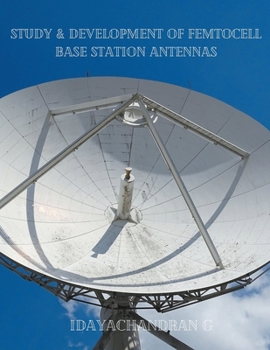Study & Development of Femtocell Base Station Antennas
Mobile communications have evolved from first to second generation
(2G), third generation (3G) and to current long term evolution-fourth
generation (LTE 4G) standards. Presently and in near future, femtocell base
station antennas are going to be deployed more due to their low power
emission, easy of deployment and maintenance.
In the literature, various technologies like microstrip, magneto-electric
dipole (MED), electromagnetic band gap (EBG) and dielectric resonator (DR)
were reported for designing the base station antennas. Among them,
microstrip and MED are considered in this work for designing base station
antennas. Microstrip antenna is selected due to its low profile, low cost of
manufacturing and preferred by the antenna manufacturing vendors. MED
antenna is chosen due to its excellent radiation characteristics and all metallic
structure without dielectrics. Furthermore, non conventional structures like
loop and materials like ferrites are explored for base station antenna
applications in this work.
In this research, femtocell base station antennas using different antenna
geometric configurations and materials for LTE bands with attributes like
broad impedance bandwidth, high front to back ratio (FBR), compact size and
high isolation are developed and studied.
A broadband monopole with loop ground and asymmetric folded
dipole antenna with defected reflector are studied and developed. By
employing a simple two-step monopole radiator, the bandwidth is improved
for monopole and using ground defects in the reflector the FBR is improved
for dipole. Using similar ground defect techniques, a broadband MED antenna
with defected ground and a compact MED antenna are developed for
improving FBR and reducing size, respectively. Also non-conventional
antennas like broadband circular loop antenna and compact annular slot ferrite
antenna are developed and studied for bandwidth improvement and size
reduction. Furthermore, isolation characteristics of two element MIMO
antennas are analyzed for spatial and polarization diversity by using isolated
ground techniques.





